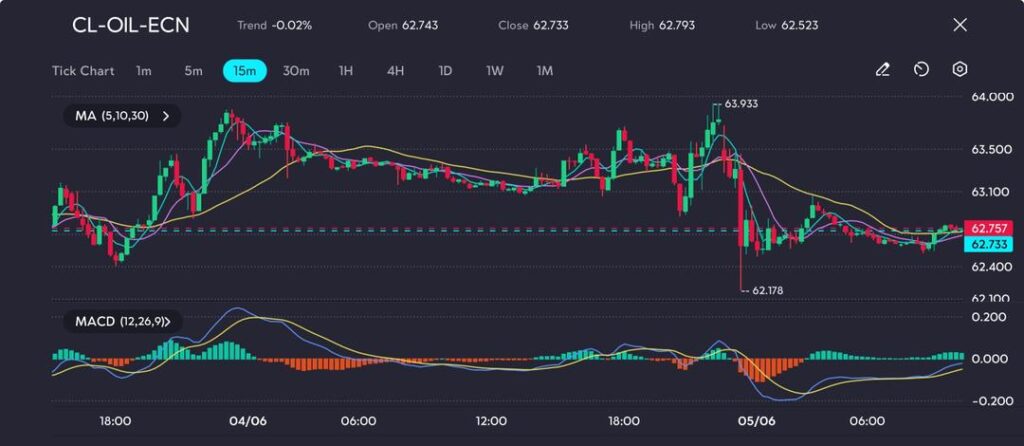
Key Points
- WTI futures settle near $62.73, down from a local high of $63.93.
- Saudi Arabia signals price cuts and aggressive output increases; U.S. gasoline builds offset crude drawdowns.
West Texas Intermediate (WTI) crude futures retreated below $63 per barrel on Thursday, extending the previous session’s losses as market confidence softened around a series of supply-tilted signals.
At the centre of the sell-off is Saudi Arabia’s strategic pivot. Reports indicate Riyadh is pushing for an OPEC+ output hike of at least 411,000 barrels per day in August, with further increases possible in September. The aim appears to be regaining lost market share amid what is typically a high-demand summer window.
Yet the kingdom’s concurrent price cuts to July-loading crude for Asian buyers, down to near four-year lows, paints a more nuanced picture. The pricing strategy reflects weaker-than-expected demand from top importers like China, where industrial activity remains tepid and refinery throughput has shown signs of stagnation.
This dual signal of increasing volume into a softening market has stoked fears of oversupply heading into Q3, particularly if global growth slows under the weight of ongoing trade disputes.
U.S. Inventory Data Adds Fuel
U.S. Energy Information Administration (EIA) figures released midweek showed a modest draw in crude inventories, but larger-than-forecast builds in gasoline and distillate stocks undercut any bullish impulse. The gasoline surplus in particular suggests weak end-user demand — a troubling sign ahead of the U.S. driving season.
Gasoline stockpiles rose by over 3 million barrels, significantly above consensus expectations of a 1.5 million barrel increase. Combined with Saudi’s summer output push, the result has been a market doubting whether demand can match the scale of upcoming supply.
Technical Analysis
Crude oil prices remain rangebound after volatile swings between $62.18 and $63.93 in the past 24 hours. The price peaked at $63.93 during the U.S. session on 4 June before sharp profit-taking triggered a fast drop to intraday lows of $62.18. That level has since held firm, acting as strong support heading into the 5 June Asia session.
Picture: Oil rebounds off $62.18 low after sharp drop; recovery stalls below $63 with trend momentum still muted, as seen on the VT Markets app
Price has recovered modestly and is now consolidating around $62.73–$62.75, with moving averages converging near the current range, suggesting indecision and low momentum. The MACD histogram is gradually turning positive after a deep dip, but signal lines remain flat, implying a lack of conviction from bulls or bears.
A sustained break above $63.00 could re-open a test of $63.50–$63.90. Conversely, failure to hold the $62.50 zone may invite another leg lower toward $62.20 and $61.80.
While dips below $62.50 may attract bargain hunters, a sustained move lower could follow if gasoline demand continues to disappoint and Saudi-led output momentum builds.










